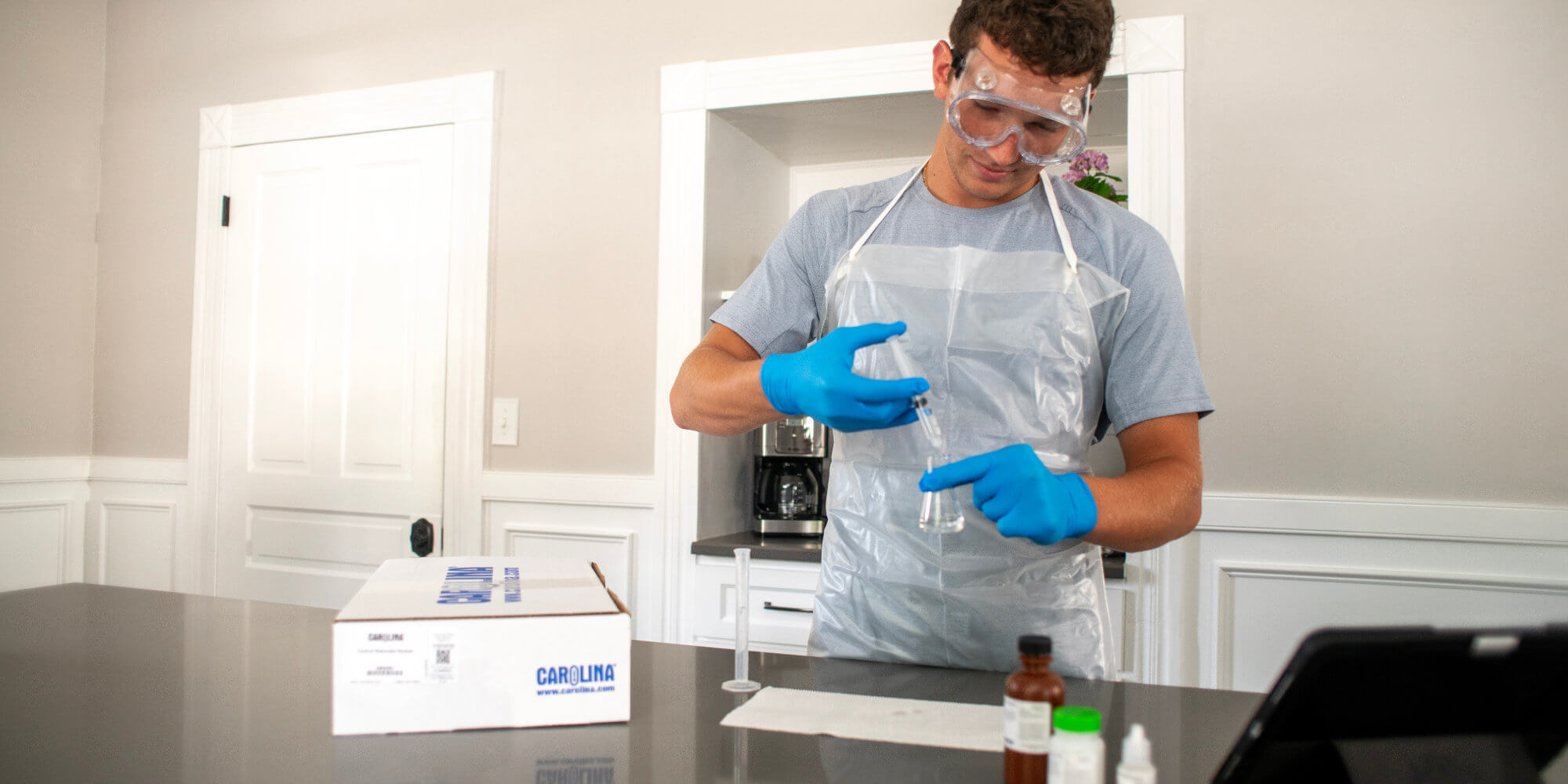Activity Objectives
- To develop a model for a limiting reactant in a chemical reaction
- To analyze the combining ratios for reactions of calcium chloride with sodium oxalate and sodium phosphate
- To write a balanced equation for each reaction
Background
A balanced chemical equation specifies the mole ratio in which the reactants in a chemical reaction combine to form the products. You derive these combining ratios from the coefficients in the balanced equation: They may or may not be a 1:1 ratio.
Note: Both advanced and general chemistry students have difficulty with calculations when the mole ratio is not 1:1.
Consider the example of hydrogen and oxygen reacting to form water:
2 H2 (g) + O2 (g) → 2 H2O (l)
The coefficients indicate 2 molecules of hydrogen combine with a molecule of oxygen to form 2 molecules of water. You may also interpret the coefficients in a balanced equation as the mole ratios between the reactants to form the products. Two moles of hydrogen and 1 mole of oxygen react to form 2 moles of water. If 4 moles of hydrogen and 1 mole of oxygen are reacted, will the reactants completely convert to product or will 1 of the reactants limit the amount of water formed?
Examining the combining ratio of 2 moles of hydrogen required for each mole of oxygen, the oxygen is consumed before the hydrogen. Two moles of hydrogen remain unreacted. The 1 mole of oxygen limits the amount of product formed. The oxygen is the limiting reactant for this reaction. The mole ratio of the reactants and the actual amount of the compounds put into the reaction determine the amount of product formed. The maximum amount of product forms when the reactants are in the same mole ratio as the coefficients in the balanced chemical equation since both reactants are completely used.
This lab uses the method of continuous variations to determine the mole ratio between the reactants. You use equal molar concentration solutions so that the volume ratio of the solutions is the same as the mole ratio. The total volume of the solutions in each mixture is held constant so the total number of moles is constant.
If the reactants are not in the same mole ratio as the coefficients in the balanced equation, then 1 reactant is in excess, some of that reactant remains at the end of the reaction, and less product forms. By varying the volume ratio, and thus the mole ratio, and observing the amount of product formed, you determine the coefficients in the balanced equation. You can then write a balanced equation for the reaction.
Instructor’s Notes
- The solutions are 0.10M in all cases and can be prepared as follows:
0.10 M CaCl2 • 2 H2O: 1.47 g/100 mL
0.10 M Na2C2O4: 1.34 g/100 mL
0.10 M Na3PO4 • 12 H2O: 3.8 g/100 mL
Note: Dropper bottles can be prepared the day before and stored for up to a year. Label every bottle with the formula, concentration, and date prepared.
- In Procedure 1, the maximum amount of precipitate should be in well 5 since the CaCl2and Na2C2O4 react in a 1:1 ratio. Before well 5, the CaCl2 is limiting. After well 5, the Na2C2O4 is limiting.
CaCl2 (aq) + Na2C2O4 (aq) → CaC2O4 (s) + 2 NaCl (aq)
- In Procedure 2, the maximum amount of precipitate should be in well 6 since the CaCl2and Na3PO4react in a 1.5:1 or 3:2 ratio. Before well 5, the CaCl2 is limiting. After well 5, the Na3PO4 is limiting.
CaCl2 (aq) + 2 Na3PO4 (aq) → Ca3(PO4) 2 (s) + 6 NaCl (aq)
Note: You may wish to draw attention to the fact that this is not a 1:1 ratio, especially for those students taking an advanced placement chemistry. It is important for these students to confidently be able to identify and to analyze reactions where the ratio is not 1:1.
Discussion of Results
Once the students complete the lab, a guided discussion of their results helps reinforce the concept of a limiting reactant.
Have the students reach a consensus on which well in each reaction produced the maximum amount of precipitate. In these wells, the reactants should be in the same ratio as the coefficients in the balanced equation.
Ask students which reactant is limiting and which reactant is in excess in the other wells. If the students are familiar with double-displacement reaction, they can use the ratio between the reactants to write a complete balanced equation for the reaction. If they are familiar with solubility rules, have them predict which compound is the precipitate and add physical states to their reactions.
A discussion of which variables are held constant in the lab, why they are held constant, and sources of error helps them understand experimental design and evaluation of results. Limiting reactants is often a difficult concept for students to understand but allowing students to perform simple reactions helps reinforce the concept.
Have students practice using claim, evidence, and reasoning as part of an error analysis for scenarios such as water splashing out of the well plates while swirling, extra drops of one of the reagents in the well plate, inconsistent drops, or forgetting to use water.
In terms of practical applications, industrial chemists run reactions to produce a compound to sell. Engage students in a discussion about why it might be economical to have the reactants in the correct mole ratio, how it might be easier to separate and purify the product without excess reactant present, and the possibility of recycling any excess reactant. Ask students for other examples of a limiting reactant or resource in their lives.
Next Generation Science Standards* (NGSS)
This activity is appropriate for high school students and addresses the following Next Generation Science Standards* (NGSS) performance expectation:
NGSS Performance Expectation: HS-PS1-7. Matter and its Interactions: Use mathematical representations to support the claim that atoms, and therefore mass, are conserved during a chemical reaction.
*Next Generation Science Standards® is a registered trademark of Achieve. Neither Achieve nor the lead states and partners that developed the Next Generation Science Standards were involved in the production of, and do not endorse, these products.
SHOP THE KIT
RELATED PRODUCTS
EXPLORE MORE ACTIVITIES
GET FREE ACTIVITIES TO YOUR INBOX
RELATED RESOURCES

Collecting and Analyzing Fingerprints

What Goes On Inside a Spectrophotometer?

Smartphones in High School Science Classes

Teach Spectroscopy with the Carolina® Spectroscopy Chamber

Calibrating pH Meters






